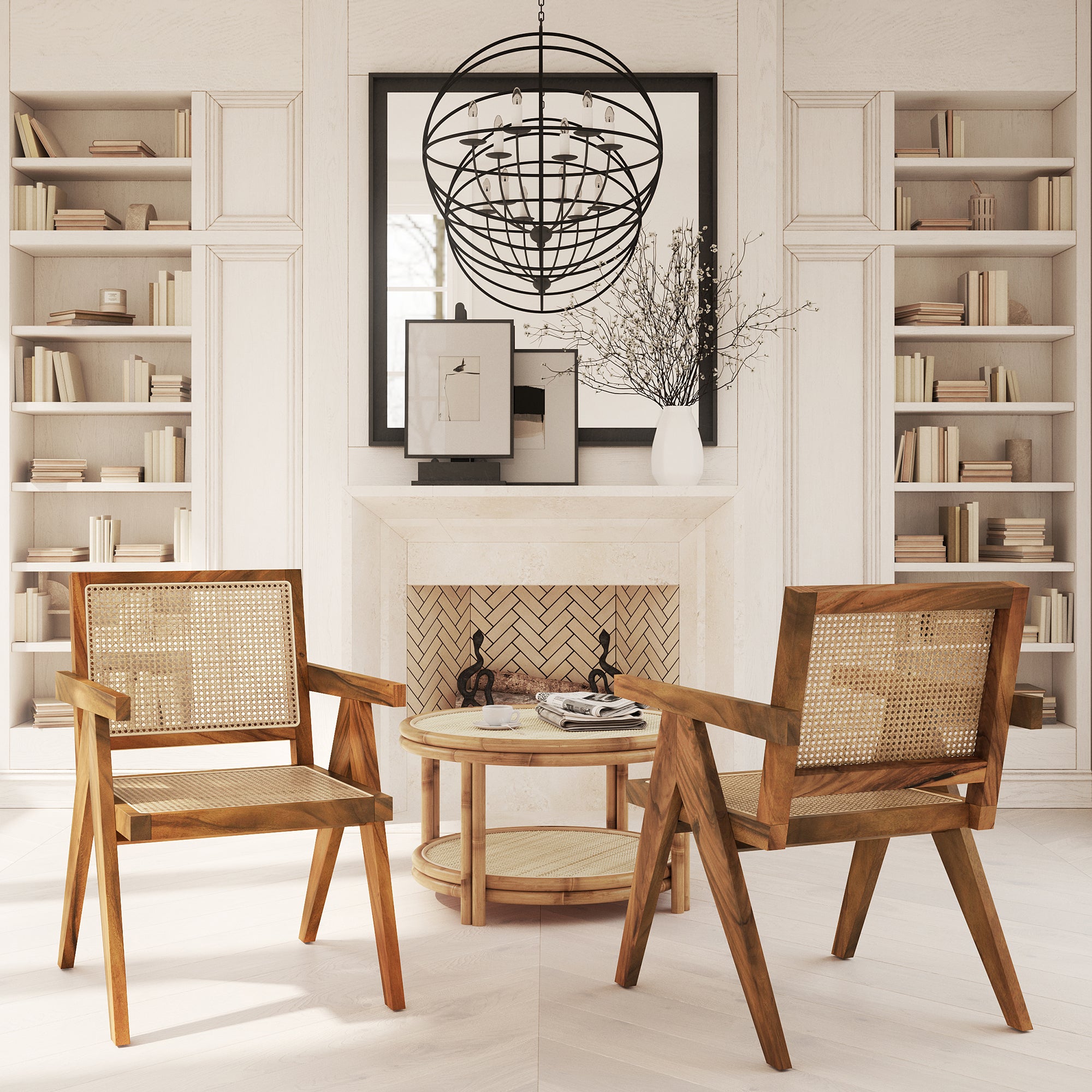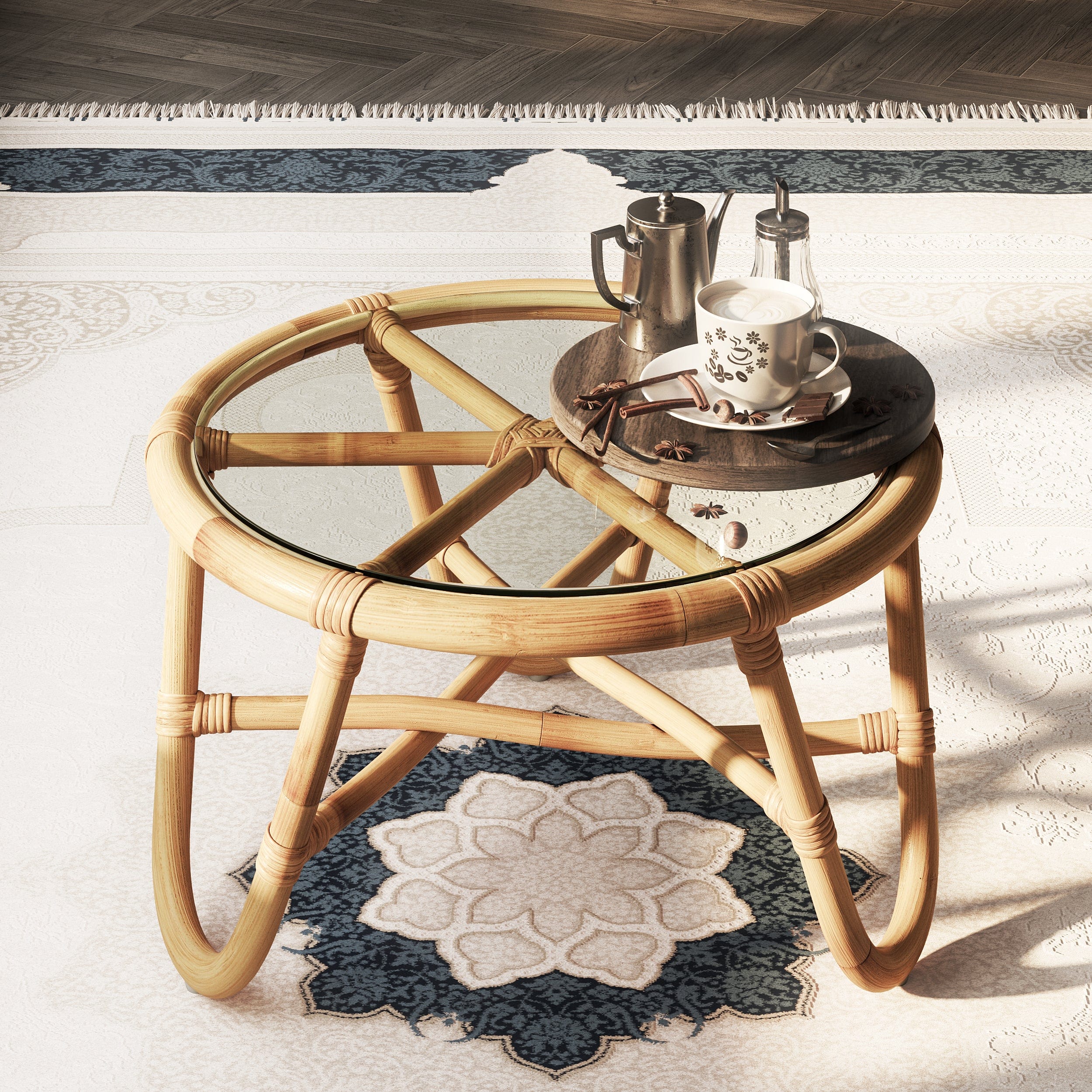🤍 Unmatched Quality, Authentic Craftsmanship
🤍 Unmatched Quality, Authentic Craftsmanship
🤍 Unmatched Quality, Authentic Craftsmanship
If you've ever been interested in mid-century furniture, you may have wondered about its price tag.
Is mid-century furniture expensive?
The answer is not as straightforward as you might think.

While some pieces can be quite costly, there are also affordable options available. Understanding the factors that contribute to the pricing of mid-century furniture can help you make informed decisions when it comes to purchasing these timeless pieces.
In this guide, we will explore the various factors that influence the cost of mid-century furniture, including the brand, designer, condition, rarity, and market demand.
By gaining a deeper understanding of these factors, you'll be able to navigate the world of mid-century furniture pricing with confidence.
Whether you're a seasoned collector or a first-time buyer, this guide will provide you with valuable insights to help you make the best choices for your budget and style preferences.
When it comes to determining the cost of mid-century furniture, there are several factors that come into play.
Understanding these factors will help you make an informed decision when shopping for pieces that fit your budget and style preferences.
When it comes to mid-century furniture, rarity and demand can greatly influence pricing. Pieces that are unique or limited in production may be more expensive compared to those that are more common or mass-produced.
Additionally, if a piece has become sought after by collectors due to its popularity, it may also fetch a higher price than comparable pieces.
For example, certain designs by iconic designers such as Eero Saarinen or Charles and Ray Eames may be more expensive due to their desirability.
The condition and quality of the pieces of furniture are another important factor that can affect the cost of mid-century furniture.
If a piece has been well cared for over time, it may be more valuable than a similar piece in worse condition. This is especially true for vintage items, which may show signs of wear and tear due to age.
When shopping for mid-century pieces, look closely at the condition of the furniture to get an accurate assessment of its value.
The brand and designer of a mid-century piece can also influence its price tag. Certain brands and designers may be more sought-after than others due to their reputation for quality craftsmanship and design.
For example, pieces from iconic mid-century renowned designers such as Knoll, Herman Miller, or Eames are often more expensive than comparable items from lesser-known designers.
Additionally, certain brands may also be associated with higher prices due to their status as luxury items.
The age and historical significance of mid-century furniture can also contribute to its pricing. Certain pieces may become more valuable as they age due to their historical relevance or association with a specific era in design history.
For instance, certain pieces from the post-war period may be seen as iconic symbols of the modern movement, making them highly sought-after among collectors.
Additionally, some older furniture may be considered antiques, significantly driving up their price.

The material and craftsmanship of the furniture are another factor that can influence its cost. High-quality materials such as solid wood or leather may be more expensive than synthetic alternatives, depending on the brand and designer.
Additionally, pieces with intricate details or intricate joinery may also carry a higher price tag due to their craftsmanship.
When shopping for mid-century furniture, it's important to pay attention to the natural materials and construction of the pieces to get an accurate assessment of their value.
Now that you understand the factors that influence mid-century furniture pricing, let's have a look at different price ranges for mid-century furniture.
When it comes to mid-century furniture, the cost can vary greatly depending on a variety of factors.
However, there are some general price ranges that can help guide your shopping decisions.
Affordable mid-century furniture options are plentiful.
These pieces can range in price from $50 to $500, depending on the condition, material, design, and history of the piece.
Many pieces can be found at secondhand stores, flea markets, yard sales, and online stores such as eBay or Etsy.
You can also find affordable mid-century furniture pieces from lesser-known brands and designers.
Mid-range mid-century furniture options typically range from $500 to $1,000 for a single item.
These pieces may be older than modern reproductions, but they are generally in good condition and show signs of wear due to normal use.
Mid-range mid-century furniture can include chairs, sofas, tables, desks, and other similar items.
Many antique stores or vintage dealers offer these pieces at reasonable prices.

High-end and luxury mid-century furniture options are typically for those looking to invest in pieces that will last a lifetime.
These pieces may range from $1,000 to $5,000 or more for a single item due to their craftsmanship, materials, and historical significance.
Examples of high-end and luxury mid-century furniture include items from iconic designers such as Knoll, Herman Miller, and Charles Eames.
These beautiful pieces are often available at select antique stores or online sellers.
Now that you have a better understanding of mid-century furniture price comparisons, you can begin your search for the perfect piece.
When shopping for mid-century furniture, there are several tips to help you find affordable pieces that are still of high quality.
Shopping at thrift stores, flea markets, and estate sales can be a great way to find affordable mid-century furniture.
Thrift stores may sell furniture that is in good condition but at a fraction of the cost of buying new pieces.
Flea markets and estate sales are also excellent sources for finding quality vintage items that may be unique or one-of-a-kind.
It’s important to inspect the pieces closely before purchasing them to ensure they are in good condition.
Exploring online marketplaces and classifieds can be a great way to find affordable mid-century furniture.
Many online furniture stores, such as Wayfair, Houzz, eBay, and Craigslist, have large selections of mid-century furniture available at reasonable prices.
Additionally, there are a number of specialized websites that focus solely on buying and selling vintage mid-century furniture.
These sites often feature pieces from iconic designers such as Eames and Herman Miller.
Joining mid-century furniture enthusiast groups and forums can be a great way to find out about affordable mid-century furniture.
There are a number of online communities dedicated to discussing and sharing information about mid-century furniture.
These groups often host events where members can buy, sell, or trade pieces with each other.
Additionally, these forums may provide guides on identifying different types of mid-century furniture and advice on restoration projects.
Considering high-quality replicas and reproductions of popular mid-century designs can be an affordable way to own a piece of vintage furniture without breaking the bank.
Many online retail stores, such as Urban Outfitters and Joybird, offer mid-century-inspired replicas of iconic designs at more affordable prices.
Additionally, some furniture makers specialize in creating custom replicas of mid-century designs.
Negotiating prices and looking for discounts or sales is another great way to find affordable mid-century furniture.
It's important to remember that the price listed is often just a starting point for negotiation, and you may be able to get a better deal if you're willing to haggle.
When dealing with dealers, it's important to be polite and courteous, but also make sure you are getting the best possible deal.
Additionally, it's important to look out for sales or discounts, as many dealers offer them on certain pieces or during specific times of the year.
Now that you have a better understanding of mid-century furniture pricing and tips for finding affordable pieces, you can invest in the perfect piece.
Mid-century furniture can be a great investment for those looking to add timeless pieces to their home.
Investing in mid-century furniture can be an expensive endeavor, but these types of furniture can provide long-term satisfaction and appreciation.
The potential value appreciation of mid-century furniture over time is an important factor to consider when investing.
Mid-century furniture has a timeless quality that appeals to both vintage and modern design decor styles, making it a great option for those looking to invest in furniture that will retain its value over time.
Additionally, mid-century furniture often becomes more valuable as it ages due to the limited availability of certain pieces.
When investing in mid-century furniture, it is important to consider a few key factors.
Firstly, research the piece and its designer to ensure that you are getting the best quality for your money.
Secondly, examine the condition of the piece carefully; any damage or wear should be taken into account when determining the price.
Thirdly, consider if there is potential for value appreciation; certain pieces may increase in value over time, making them a great investment.
Consulting with experts or appraisers before making a purchase is an important step to take when investing in mid-century furniture.
By speaking to experts or appraisers, you can gain valuable insight into the condition and value of the piece you are considering, which will help you make an informed decision.
Additionally, these professionals may be able to point out any features or marks that indicate that the piece may be fake.
Proper care and maintenance to preserve the value of mid-century furniture is essential for ensuring your investment pays off.
Mid-century furniture typically requires regular cleaning and occasional polishing in order to maintain its condition and prevent wear and tear.
Additionally, it is important to keep the piece away from direct sunlight, moisture, and any other elements that could potentially damage it.
Regularly dusting the furniture and avoiding contact with abrasive materials can also help to maintain its condition.
When investing in mid-century furniture, it is important to consider both the potential investment value and your own personal enjoyment.
While the potential investment value of a piece may be an important factor to consider when making a purchase, it is also important to choose pieces that you will enjoy for years to come.
Investing in pieces that you love can be just as rewarding as investing in pieces with the potential for value appreciation.
All in all, mid-century furniture can be a great investment if you research the piece and its designer, examine the condition of the piece carefully, consider the potential for value appreciation, consult with experts or appraisers before making a purchase, take proper care and maintenance to preserve the value of mid-century furniture, and balance personal enjoyment with potential investment value.
Lastly, let's address some frequently asked questions to address any remaining uncertainties you may have.
While we have covered a lot of information on the topic of mid-century furniture pricing, you may still have some lingering questions.
In this section, we will address some frequently asked questions to provide further clarity on the subject.
When shopping for mid-century furniture, it is important to remember that you can always try to negotiate the price.
One tip is to be aware of current market prices and how much similar pieces are selling for. This will give you a good starting point when negotiating.
Another tip is to find out if the seller is willing to accept a lower offer in exchange for an immediate sale. This could be a great way to get a good deal.
When it comes to mid-century furniture, one can find a range of materials used.
Typically, popular materials used in mid-century style furniture are solid wood, metal, plywood, and plastic.
Solid wood is often used for the frame and legs of pieces such as chairs or tables, while metal is often used for legs or decorative accents.
Plywood is commonly used for large surfaces such as tabletops, while plastic is often used for molded parts or covers.
When it comes to buying mid-century furniture, there are several distinct advantages that come with purchasing a modern, reproduction piece over a real vintage piece.
For one, modern reproductions of mid-century furniture are often much more affordable than their vintage counterparts and can offer the same look and feel as their vintage counterparts.
Another advantage of modern reproductions is that they are often made with better-quality materials and construction techniques than many vintage pieces, which can make them more durable and longer-lasting.
Lastly, modern reproductions may be easier to find than vintage pieces, depending on your location.
Mid-century furniture and mid-century modern furniture are often considered to be one and the same; however, there are slight differences between the two styles.
Mid-century furniture is typically characterized by its timeless design elements, such as organic shapes, clean lines, and simple silhouettes.
Midcentury modern furniture, on the other hand, is more focused on functionality and often incorporates modern technology and materials.
Generally speaking, mid-century modern style furniture may have a more contemporary look than mid-century furniture.
When it comes to mid-century furniture designers, there are several iconic figures who have left a lasting impact on the design world.
One of the most renowned mid-century furniture designers is Charles and Ray Eames, who created many timeless pieces, including the Lounge Chair and Ottoman, the molded plywood Base Chair, and the Aluminum Group office chairs.
Danish designer Hans Wegner was also known for his furniture designs, including the Wishbone Chair and the Shell Chair.
Other iconic mid-century designers include George Nelson, Florence Knoll, and Eero Saarinen.
Mid-century furniture can range in price depending on various factors such as rarity, condition, designer, and demand.
While some pieces may be considered expensive, there are also affordable options available for those on a budget.
It is important to do thorough research, assess the quality and authenticity of the piece, and explore different sources for purchasing mid-century furniture.
By understanding the factors that contribute to pricing and utilizing negotiation techniques, it is possible to find mid-century furniture at a reasonable price.
Opting for contemporary mid-century style furniture offers affordability, durability, customization, and a wider range of options compared to authentic vintage pieces.
Whether you are a seasoned collector or a beginner, this guide aims to provide you with the knowledge and tools to navigate the world of mid-century furniture pricing.


